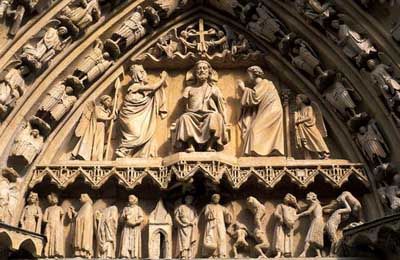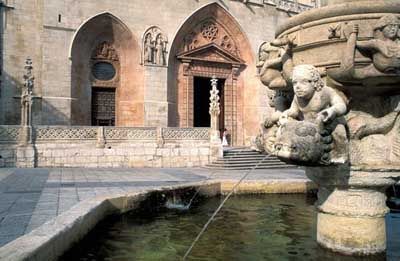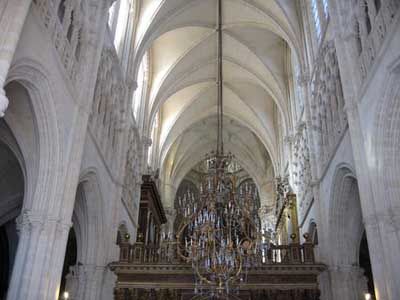Holiday Resolution
Burgos Cathedral, an outstanding example of an integral Gothic cathedral, with church, cloister and annexes. has exerted, at different times,
a considerable influence on the evolution of architecture and the plastic arts. It bears witness to the creative genius of many architects, sculptors, and craftsmen. It is sufficient to call to mind its role in the diffusion in Spain of the forms of French Gothic art of the 13th century, and the international importance of the workshop in the 15th and 16th centuries where artists from the Rhineland, Burgundy and Flanders trained Spanish architects and sculptors, thus creating one of the most flourishing schools of the end of the Middle Ages.
Begun in 1221 and completed in 1567, Santa María de Burgos is a striking summary of the evolution of Gothic architecture. The body of the work, undertaken through the initiative of Bishop Mauricio in the reign of Ferdinand III 'the Holy', was rapidly carried out: a first campaign, the most important, was completed in 1293. The plan of the cathedral is based on a Latin cross of pleasing proportions. The three-storey elevation, the vaulting, and the tracery of the windows are closely related to contemporary models of the north of France. The portals of the transept (the Puerta del Sarmental to the south and the Puerta de la Coronería to the north) may also be compared with the great sculpted ensembles of the French royal domain, while the enamelled brass tomb of Bishop Mauricio resembles the so-called Limoges goldsmith work. Undertaken after the cathedral, the two-storeyed cloister that was completed towards 1280 still fits within the framework of 'French' High Gothic.
Source: unesco.org




No comments:
Post a Comment